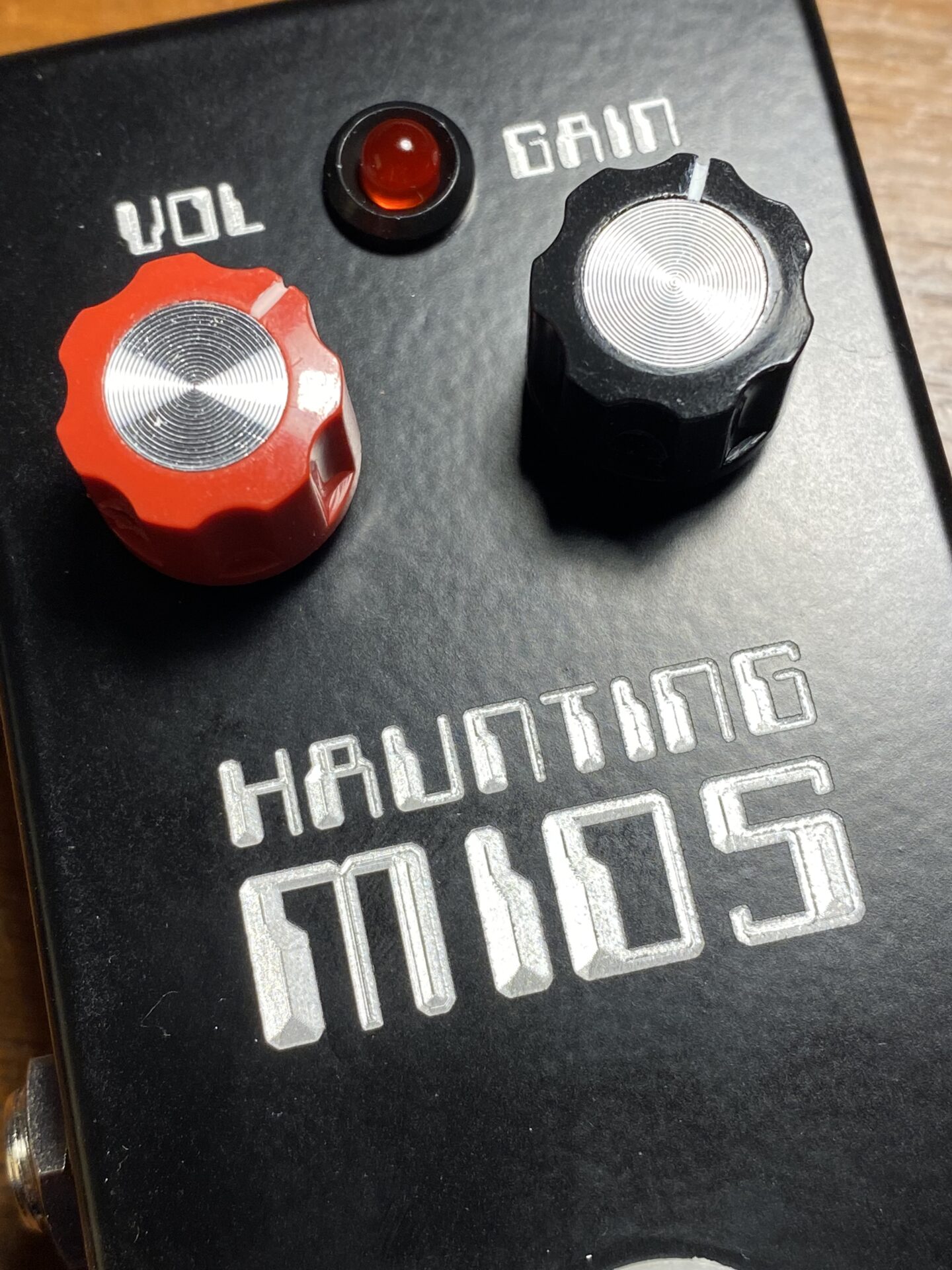What’s Haunting Mids?
Haunting Mids is a Big Muff variant. In a nutshell it’s the input buffer, and first two clipping stages from the regular Big Muff circuit. It drops the tone control and the output buffer of the original circuit. There are a few other changes in part values but the the circuit is otherwise the same.
Haunting Mids Fuzz is not to be confused with JHS pedals Haunting Mids which is a completely different circuit that came later.
I created this PCB layout from version 3 of the original Haunting Mids. I made small change by moving the sustain/gain control to the outside of the box. The original circuit used an internal trim pot with only the volume accessible from the outside.

PCBs
The PCB was designed in Eagle PCB. You can order boards from OSH Park for fairly cheap but you must order three. You can order boards here:
https://oshpark.com/shared_projects/Wu8UpzQE
Build
this should be a pretty easy build. Without the tone control and output buffer there are fewer parts than the original Big Muff. Pots and LED are mounted to the board. And most of the off board connections are lined up along the bottom of the board for easy wiring.
The parts are standard and easy to find. You should be able to order all of the parts at Tayda.
| Capacitors | ||
| C1 | 220n | |
| C2 | 470p | |
| C3 | 150n | |
| C4 | 150n | |
| C5 | 470p | |
| C6 | 470n | |
| C7 | 150n | |
| C8 | 470p | |
| C9 | 470n | |
| C10 | 220n | |
| C11 | 47µ | |
| Pots | ||
| VOLUME | A100k | |
| SUSTAIN | A100k | |
| Diodes | ||
| D1 | 1n4001 | |
| D2 | LED Red 3MM | |
| D3 | LED Red 3MM | |
| D4 | 1n4742 | |
| D5 | 1n4742 | |
| D6 | LED | |
| Transistors | ||
| Q1 | BC337 | |
| Q2 | BC337 | |
| Q3 | BC337 | |
| Resistors | ||
| R1 | 33k | |
| R2 | 82k | |
| R3 | 120r | |
| R4 | 470k | |
| R5 | 18k | |
| R6 | 1k | |
| R7 | 8k2 | |
| R8 | 56k | |
| R9 | 100r | |
| R10 | 470k | |
| R11 | 10k | |
| R12 | 8k2 | |
| R13 | 82k | |
| R14 | 120r | |
| R15 | 470k | |
| R16 | 18k | |
| R17 | RLED |

The circuit shows BC337 transistors but these don’t seem to be so special. You should be able to replace these with just about any NPN device. The usual suspects 2N3904 and 2N5088, or maybe 2N5089 if you want more gain.
The diodes are the same. You can probably experiment with anything for diodes in this circuit. The choices here are interesting definitely try them. But if don’t have these parts or can’t get them use what you have!

Wiring









Leave a Reply